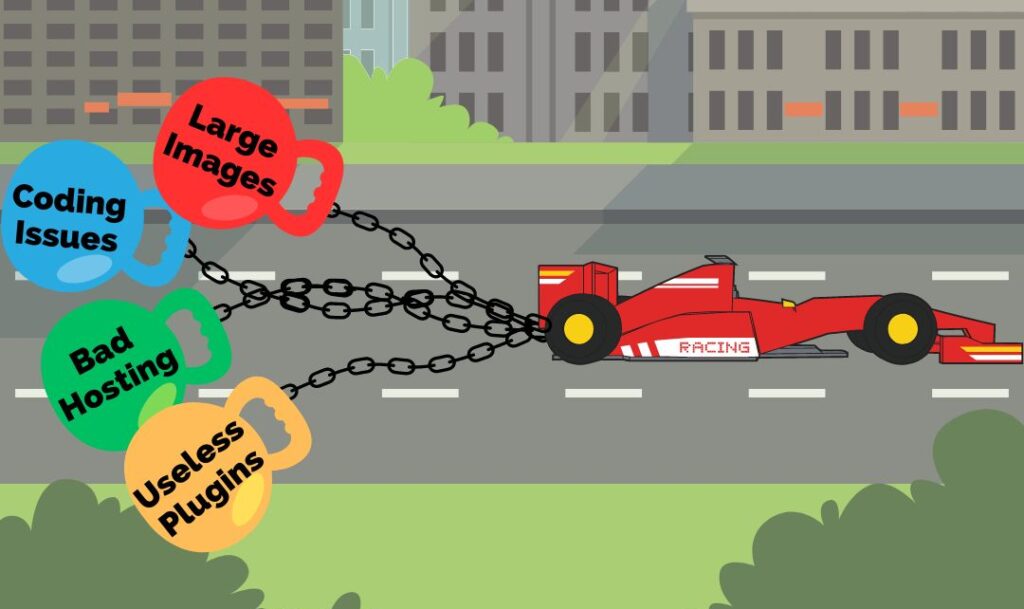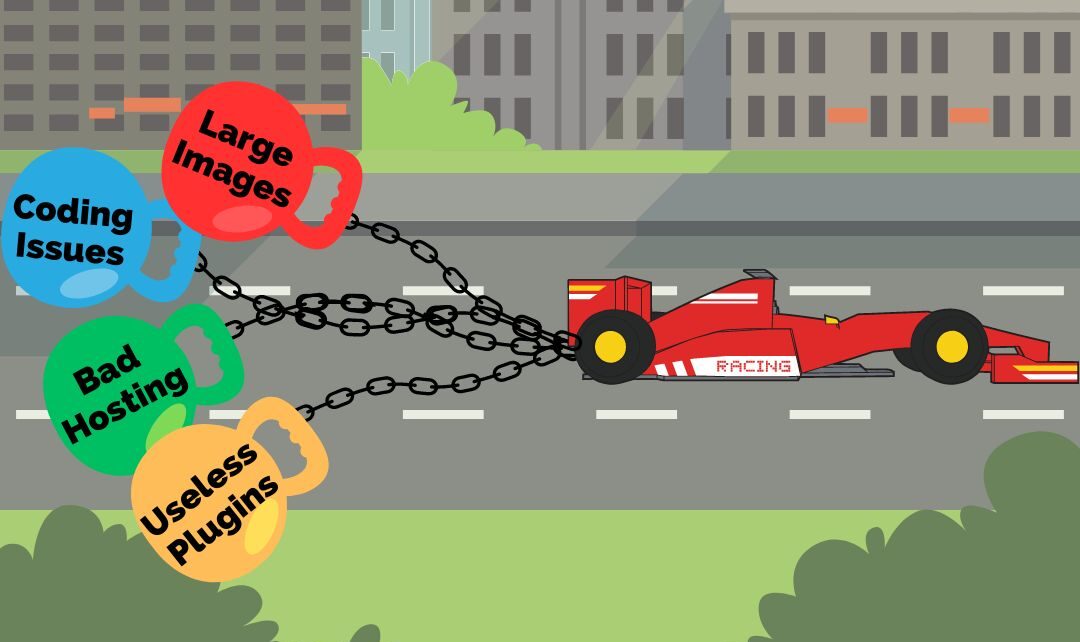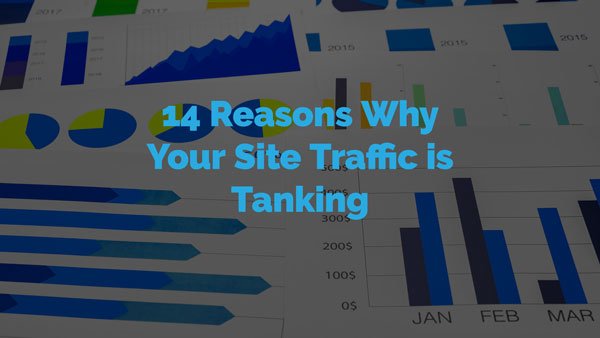Welcome to the fast lane of the digital highway, where every second counts!
Picture this: You stumble upon a website that takes ages to load. Frustrating, right? As a business owner, you can’t afford to subject your customers to such an ordeal. Enter the world of site speed—a critical factor that can make or break your online presence. In this article, we’ll unravel the mysteries behind slow websites, the power of lightning-fast load times, and equip you with actionable tips to rev up your website’s speedometer.
Identifying the Culprits:
Numerous factors can hamper your website’s speed. It’s crucial to identify these speed bumps and address them to unlock the full potential of your website. Let’s expose the saboteurs:
- Bloated Code: Unoptimised and excessive HTML, CSS, and JavaScript can weigh down your site, making it sluggish and unresponsive.
- Large Image Files: High-resolution images that are not optimised for the web can drastically slow down your website.
- Hosting Headaches: A subpar hosting service or inadequate server resources can be the speed bumps that slow down your site.
- Plugin Overload: Third-party scripts and plugins are convenient, but an overabundance can weigh down your site with excessive HTTP requests.
- Lack of Caching: Absence or improper implementation of caching mechanisms can force the browser to download the same resources repeatedly.

Embracing the Need for Speed
In today’s digital landscape, speed is no longer a luxury; it’s a necessity. Every millisecond counts, as users demand instant gratification and seamless browsing experiences. On the other hand, fast-loading sites result in increased engagement, longer session durations, higher conversion rates, and improved user retention.
- User Experience: Users have little patience for slow-loading websites. Research shows that even a one-second delay in page load time can lead to higher bounce rates (visitors abandoning your site) and decreased customer satisfaction.
- Search Engine Rankings: Search engines like Google consider site speed as one of the ranking factors. A faster website is more likely to appear higher in search results, driving organic traffic your way.
- Conversion Rates: Speed and conversions go hand in hand. Faster load times encourage visitors to stay longer, explore your offerings, and complete desired actions, such as making a purchase or submitting a contact form.
- Mobile Experience: In the mobile-centric world we live in, slow-loading mobile websites are a big no-no. Speedy performance is essential to capturing the hearts of mobile users and expanding your customer base.
Simple Ways to Turbocharge Site and Page Load Speeds:
- Image Optimisation: Whip those images into shape by compressing them without sacrificing quality. Choose the right formats (JPEG, PNG) and utilise handy tools to trim their file sizes.
- Code Slimming and Merging: Give your code a makeover by removing unnecessary clutter. Minify HTML, CSS, and JavaScript files and merge them whenever possible to reduce HTTP requests.
- Hosting Heroics: Find a reliable hosting provider that offers robust resources and ensures your site is always up and running smoothly.
- Cache Power: Activate caching mechanisms to let browsers store your website’s data locally, eliminating redundant downloads and speeding things up.
- Priority Boarding: Load vital content first, such as text and essential design elements, before tackling larger files like images or videos. Give users an instant taste of what your website has to offer.
- Tame the Plugin Jungle: Keep your plugins and scripts in check. Regularly assess and remove any unused or redundant ones that are weighing down your site’s performance.
- Embrace the Power of Content Delivery Networks (CDNs): Leverage CDNs to distribute your website’s content across multiple servers worldwide, reducing latency and ensuring faster delivery to users regardless of their geographical location.
- Streamline Redirects: Excessive redirects can slow down your site. Optimise your redirect chains and minimise them wherever possible to keep the journey swift and seamless.
- Monitor and Optimise: Continuously monitor your site’s speed using tools like Google PageSpeed Insights or GTmetrix. Identify areas of improvement and optimise accordingly to maintain peak performance.
Improve your site speed by implementing all these, and MORE!
Conclusion
As a savvy business owner, you now understand the critical role of site speed in creating a seamless and engaging online experience for your customers. Slow websites can cost you valuable conversions, search engine visibility, and customer satisfaction. By implementing simple yet effective strategies like optimising images, slimming down code, choosing reliable hosting, leveraging caching, and embracing CDNs, you can turbocharge your site’s speed and unlock its full potential. Remember, speed is not just a technical necessity; it’s a competitive advantage that propels your business ahead in the fast-paced digital landscape. Embrace the need for speed and watch your website accelerate towards success.






